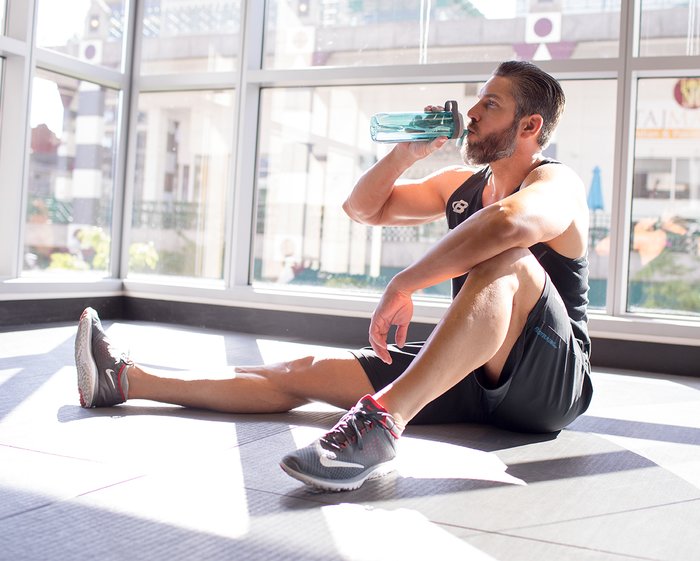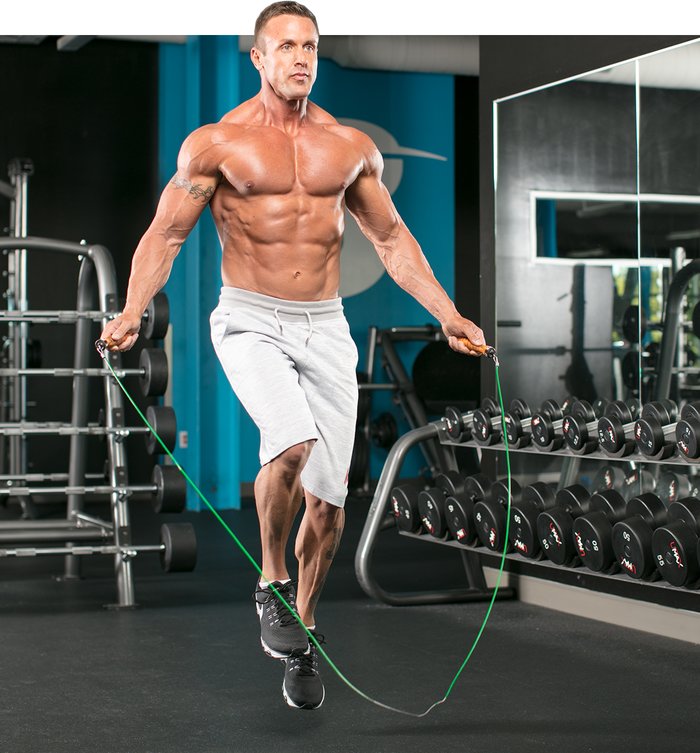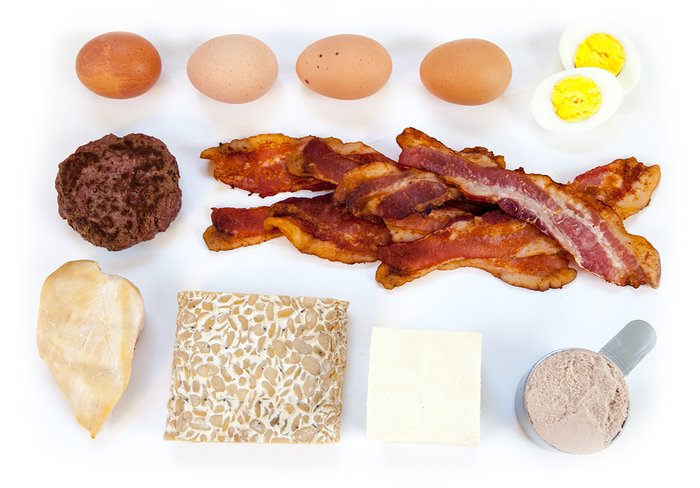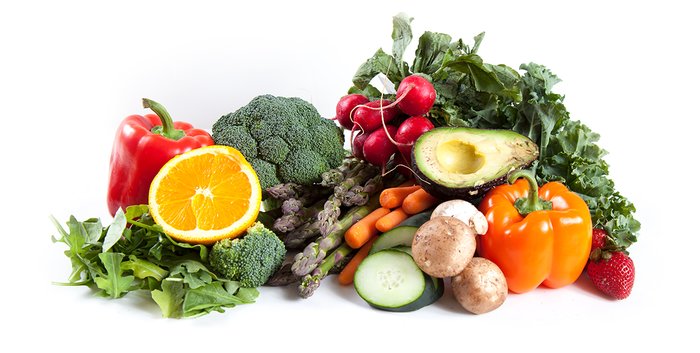When it comes to leaning out, there's no way to avoid the cold, hard truth: You must watch what you eat. Cutting calories and minding your macros is about as fun as bathing a cat, especially if you're prone to hangry outbursts or the constant, grumble of an ignored stomach.
The good news is you can keep your appetite in check by employing a few simple tricks to calm your hunger hormones between meals—and help you learn the difference between "real" hunger and hunger that come more from habit, boredom, or thirst.
Reach for Water First
"When appetite hits unexpectedly, reach for an ice-cold glass of water," says Jennifer Bowers, Ph.D., a registered dietitian from Arizona. "Dehydration or thirst can make us think we're hungry when we really just need some good old hydration."

A 2010 study presented at a meeting of the American Chemical Society found that dieters who drank 16 ounces of water prior to every meal lost significantly more weight than those who dove right into their food.[1] The study's senior author, Brenda Davy, Ph.D., noted that in previous studies, people who drank water prior to a meal consumed 75-90 fewer calories, most likely because the water made them feel full.
If you feel hungry soon after meals, having a cold drink is a good way to tell whether you're hungry or just thirsty. With practice, you can learn to tell the difference between the two.
Try Quick Bursts of Exercise
Mounting research also points to the appetite-suppressing role of high-intensity interval training (HIIT).[2] As little as two minutes of all-out exercise can be all it takes to keep that hunger in check.

A pilot study published in the journal Nutrients in April 2017, examined whether short bursts of HIIT between meals affects appetite. Eight overweight participants either rested or engaged in two minutes of all-out sprints on a stationary bike. For the next two hours, researchers analyzed the participants' hormone profiles and self-reported feelings of appetite.[3]
The researchers found that the people who had performed HIIT weren't as hungry immediately following and for two hours after exercising as the people who rested. Their lack of appetite was most likely caused by reduced levels of plasma acylated ghrelin, a chemical commonly known as the "hunger hormone."
It should be noted, however, that those who exercised and those who didn't consumed roughly the same number of calories at their next meal. HIIT might be helpful in taming hunger, but it is unclear whether it leads to long-term weight loss.
Focus on Protein
Your body needs protein to build muscle mass, but protein can also be very helpful in suppressing appetite.

"Those who consume higher amounts of protein tend to consume fewer calories overall," says Dr. Caroline Apovian, director of the Nutrition and Weight Management Center at the Boston Medical Center and vice president of The Obesity Society. "Protein takes the longest to digest and produces the greatest feelings of satiety," she says, "and it guards your lean muscle mass, one of the primary drivers of your metabolism."
The trick, of course, is knowing how much to consume. Most Americans get plenty of protein, although they would do well to avoid fatty cuts of ribs and bacon in favor of leaner options. If you're not sure you're getting all the protein you need, it's probably fine to increase your intake a bit.
And when you choose to get protein from protein shakes, make the shakes a little thicker. Research suggests this will help reduce your appetite.[4]
Think High Volume, Low Calories
Just like water can help fill your stomach and prevent overeating at meals, so can filling up on high-volume, low-calorie foods such as salads, fruit, water-based soups, and raw vegetables.

"It's the whole concept of 'volume' eating but with less chance of overeating calories," says Dr. Keith Ayoob, a registered dietitian and an Associate Clinical Professor at Albert Einstein College of Medicine. Dr. Ayoob says the volume-eating concept has been championed by Dr. Barbara Rolls, the Director of Nutritional Sciences at Penn State University. Her 2005 paper published in the American Journal of Clinical Nutrition noted that weight-loss protocols tend to be more successful when they are focused more on encouraging high consumption of low-energy-dense foods and less on controlling portion sizes or reducing fat consumption.[5]
In the real world, the volume-eating concept basically translates into eating salad and cooked veggies first at any meal.
"Eat these foods first and don't be stingy—except with the amount of oil you use," Dr. Ayoob says.
The idea is that once you load up on side salad, cooked veggies, and maybe a little fruit, you won't be nearly as hungry when higher-calorie foods hit the table.
References
- Greiner, L. A. (2010). Clinical trial confirms effectiveness of simple appetite control method.
- Sim, A. Y., Wallman, K. E., Fairchild, T. J., & Guelfi, K. J. (2014). High-intensity intermittent exercise attenuates ad-libitum energy intake. International Journal of Obesity, 38(3), 417.
- Holliday, A., & Blannin, A. K. (2017). Very Low Volume Sprint Interval Exercise Suppresses Subjective Appetite, Lowers Acylated Ghrelin, and Elevates GLP-1 in Overweight Individuals: A Pilot Study. Nutrients, 9(4), 362.
- Yeomans, M. R., Milton, M. R., & Chambers, L. (2017). Additive effects of sensory-enhanced satiety and memory for recent eating on appetite. Appetite.
- Ello-Martin, J. A., Ledikwe, J. H., & Rolls, B. J. (2005). The influence of food portion size and energy density on energy intake: implications for weight management. The American Journal of Clinical Nutrition, 82(1), 236S-241S.



